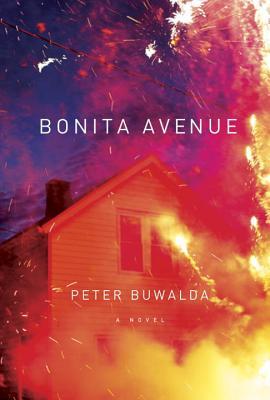 Bonita Avenue
Bonita Avenue
by Peter Buwalda; translated by Jonathan Reeder
Hogarth, 2015; 544pp
Bonita Avenue is a social-realist comedy and a nightmare thriller. Author Peter Buwalda uses three characters, each tunnel-visioned in their own way, to tell a claustrophobic and totally compelling family saga. We discover very early on where it’s all headed; to read Bonita Avenue is like being locked in the trunk of a car and driven forty miles of bad road at high speed to get there. The suspense lies in the how of it all, and Buwalda, with his gruesome, familicidal imagination, does not disappoint.
Siem Sigerius is a sort of Dutch übermensch: judoka and mathematician of distinction; incipient politician; rector at Tubantia University. When we first meet him, in 1996, he’s in his fifties, and a man so popular that even a nude photo of him in the national press — sagging belly, leaping into water; snapped in a moment of college-sport hijinks — cannot scratch his reputation. As Michael Caine might say, though, he’s a big man but he’s out of shape. And out of joint, too, for he’s come to suspect that his stepdaughter, Joni, is the star attraction of a porn site he’s a member of. As the plot hurtles along, switching perspectives between Siem, Joni, and Aaron Bever, Joni’s schizophrenic boyfriend, we discover further skeletons in Siem’s past, principally an unmentioned sociopath son serving time for manslaughter. As he discovers he may be in the frame for a ministerial appointment in the government, Siem and his family’s demons set him on a tragic path. An explosion at a fireworks factory in Enschede (which really happened, in 2000) becomes a metaphor for the unhappy fate awaiting the Sigerius clan.
The novel, Buwalda’s first, has been very well received, with many critics comparing the author to Jonathan Franzen in his ambition, scope, and narrative achievement. Anthony Cummins in the Telegraph called it “as toe-curling as early Roth, as roomy as Franzen and as caustic as Houellebecq.” For my money, The New York Times‘ Michael Upchurch hits closest when he describes Bonita Avenue as an “insane soap opera.” It captures both the fundamentally domestic drama at the heart of the story and its fabulously violent and off-kilter unravelling. I’d add a third term, though: tragedy.
There’s a moment of awful and brilliant absurdity halfway through the book when Siem and Joni see each other at last for what they are. Siem has broken in to his stepdaughter’s home to try to confirm whether or not she really is a porn star. She and Aaron return home early from vacation and she discovers him in the act. Without wishing to ruin a truly spectacular and ghastly scene, I withhold the rest of the details. Suffice it to say, as Buwalda does, “They are in each other’s nightmare.” It’s anagnorisis and peripeteia all at once. Their confrontation, which lasts seconds, sets in motion the whole of the rest of the action. Without this moment, the book is a black comedy; with it, it’s a bona fide tragedy.
Further reading
¶ Read Chapter 1 of Bonita Avenue here.
¶ For an alternative perspective, with a fair few spoilers, read Tony Tulathimutte’s review of Bonita Avenue in the LA Review of Books here.




